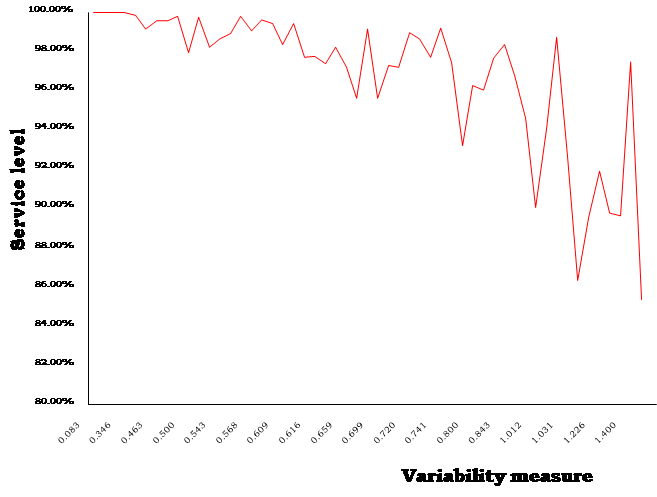In inventory management research, assuming that unsatisfied demand is backlogged is dominant, because it yields mathematically tractable results, including optimal policy structures under various cost structures. However, in quite some inventory management situations, it is more realistic to assume that unsatisfied demand is lost. This is typical for supermarkets and other retail stores, and in upstream commodity businesses. There is no hope to find the optimal policy using numerical methods, due to the fact that we must take into account net stock and each individual outstanding order when deciding how much to order. Fortunately, there has been considerable progress on periodic-review policies under linear holding and penalty costs, which is quite relevant for practice. We can safely say we solved the lost-sales model in that case, implying that results can be made available for practice. In fact, that is my intention with the tool I provide for download.
The tool provides simulation-based optimization of three policies
- Base stock policies that are asymptotically optimal for penalty costs to infinity
- Fixed order quantity policies that are asymptotically optimal for lead time to infinity
- Fixed P3 policy, where P3 is defined as the non-stockout probability at the end of an arbitrary period
An extensive experimental study shows that the fixed P3 policy dominates the other two policies. For most real-life situation the cost reduction is substantial. An important auxiliary benefit of the fixed P3 policy is that it shows a low replenishment order volatility, even for volatile demand. This implies that upstream suppliers can benefit from low demand volatility. Our experiments show that asymptotically the P3 policy behaves like the asymptotically optimal policies, both for high penalty costs and long lead times.
The tool is self-explanatory, assuming the user is familiar with basic inventory models. Next to policy parameter simulation, the tool allows the user to simulate period-by-period to see the difference in order quantities and the consequential evolution of inventory over time. The tool also provides a finite horizon simulation to show these differences between the policies under more realistic conditions, realizing that infinite horizon behavior and short-term behavior of control policies may be different. We created an instruction video:



